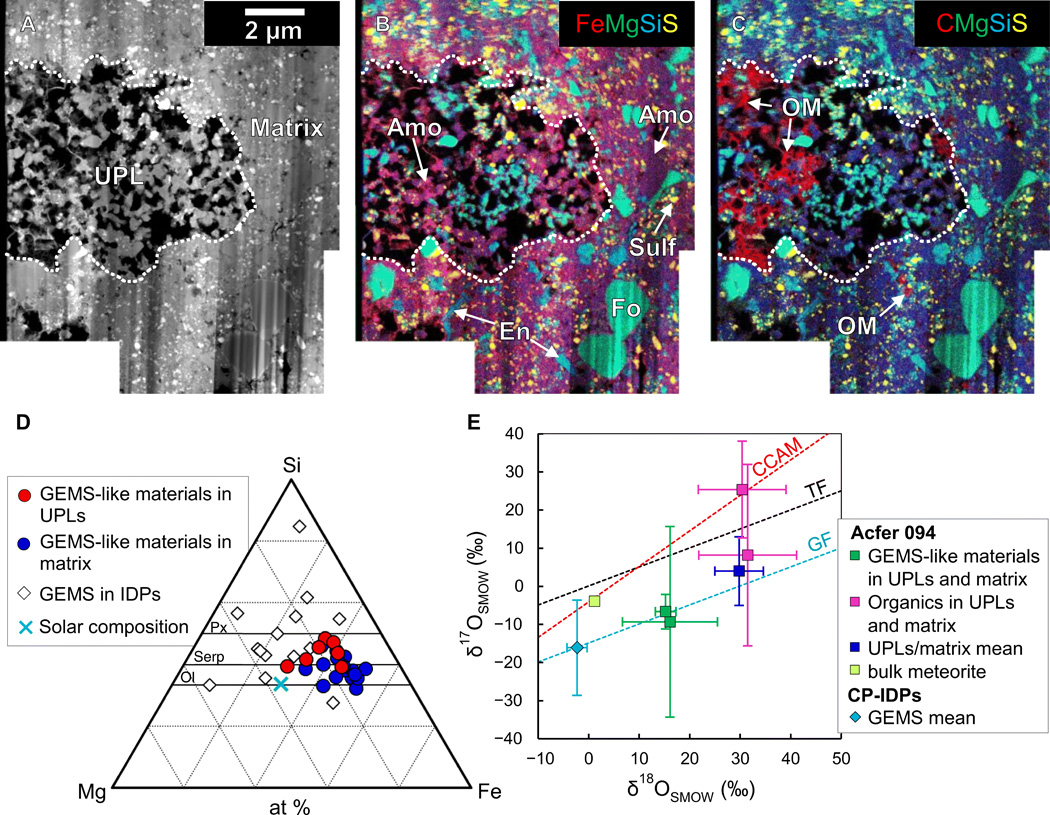 Image credit: ScienceAdvances
Image credit: ScienceAdvances
A primordial meteorite found in the Algerian desert in 1990 is yielding interesting new clues about the formation of the Solar System. New analysis of meteorite Acfer 094e has revealed tiny pores distributed throughout the rock which are attributed to ancient fossilized holes created by the formation of ice crystals.
It isn't known when Acfer 094 fell to Earth, but we it's been calculated to be around 4.6 billion years old which is approximately the same age as our Solar System. New research suggests it came from farther out in the system before making its way to Earth.
The meteor, interestingly, is a sort of time capsule. It's a very primitive object left over from the dusty accretion disc that went on to form the planets, and therefore loaded with juicy geological information about our Solar System as it was forming.
Acfer 094 has undergone a quite a lot of scrutiny in the three decades since it was discovered. Recently, a team of researchers led by planetary scientist Megumi Matsumoto of Kyoto University, looked at the space rock in an entirely new way, systematically with a combination of analyses including sampling, microscopy, and spectroscopy methods.
These high-resolution techniques reveal a previously unidentified structure inside of the rock, a highly porous texture which is widely distributed throughout the meteor. You could say it's a bit like a sponge, pocked with tiny pores around 11 micrometers across - just a little bit larger than a red blood cell.
The abstract from this research paper:
"Carbonaceous chondrites are meteorites believed to preserve our planet’s source materials, but the precise nature of these materials still remains uncertain. To uncover pristine planetary materials, we performed synchrotron radiation–based x-ray computed nanotomography of a primitive carbonaceous chondrite, Acfer 094, and found ultraporous lithology (UPL) widely distributed in a fine-grained matrix. UPLs are porous aggregates of amorphous and crystalline silicates, Fe─Ni sulfides, and organics. The porous texture must have been formed by removal of ice previously filling pore spaces, suggesting that UPLs represent fossils of primordial ice. The ice-bearing UPLs formed through sintering of fluffy icy dust aggregates around the H2O snow line in the solar nebula and were incorporated into the Acfer 094 parent body, providing new insight into asteroid formation by dust agglomeration."
If you want to read the research paper, here's the URL:
https://advances.sciencemag.org/content/5/11/eaax5078
